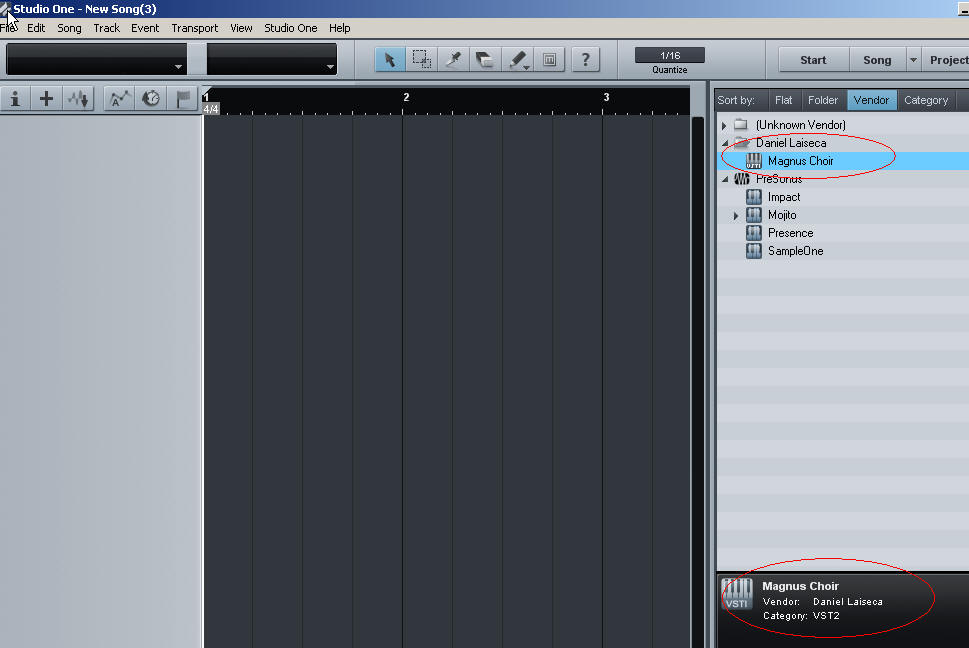Vst Plugins Folder Location
Posted By admin On 24.12.20Most installers for VSTs will ask you for a folder for the application, and a folder for the VSTs themselves. Personally I have d: VSTs x86 and d: VSTs x64 folders for 32bit and 64bit VSTs respectively. Then, in Acid Music Studio, go to view - plugin manager; in the plugin manager window, on its toolbar, click the right-most icon 'configure VST'. To open the VST 2 Plug-in Path Settings, select Studio VST Plug-in Manager, and click VST 2 Plug-in Path Settings. VST 2 Plug-in path list. Shows all VST 2 plug-in paths. Allows you to add a new VST 2 plug-in path. Deletes the selected VST 2 plug-in path. Resets the list to default. Rescans the plug. The other plug-ins are located in the bottom within the Smart Controls area, including within the plug-ins option as well as within the Amp Designer, Bass Amp Designer, and the Pedalboard. Whenever you download plug-ins through the way I showed earlier in the article, the. Mac OS X users: From within Studio One n avigate to Preferences/Options/ Locations/VST Plug-ins Click on the Add button, and specify the location of your plug-in. You can also drag-and-drop any folder from the Explorer/Finder into the Locations list in Studio One. By default, Reason 9.5/10 and Reason Essentials 9.5/10 look for installed VST (2.4, 64-bit) plugins in the following locations: Under Windows: C: Program Files VSTplugins C: Program Files Steinberg VSTplugins C: Program Files Common Files Steinberg VST2 Under Mac OS: Library/Audio/Plug-ins/VST /Library/Audio/Plug-ins/VST It's also possible to add your own custom locations to the 'search list' if you like. Open Live's Preferences → Plug-ins (Live 10.1 and later)/ File Folder (all Live versions until 10.1) → Plug-In Sources. Activate either the Custom folder or System folder (VST 3 only) as required. Note: only add discrete folders which contain VST plug-ins. Adding entire drives.
UPDATE: Both problems solved.I got AmpliTube 4 to work in standalone mode by removing version 4.03 and installing version 4.02 in it's place.
To get Amplitube 4 working as a plug-in, the two files you need to copy into your host plug-ins folder are:
1. C:Program FilesVstPlugInsAmpliTube 4 .dll
2. C:Program FilesCommon FilesAmpliTube 4.vst3
I can't swear to it, but I don't recall seeing the file referred to in 1. on my file system until after I removed v4.03 and replaced it v4.02.
 Anyhow, update posted in the even it might help someone else.
Anyhow, update posted in the even it might help someone else. Windows Default Vst Plugin Folder
ORIGINAL PROBLEM STATEMENT:
I'm trying to use AmpliTube 4 and Fender bundle (licensed) on Windows 10. Can someone please tell me exactly what AmpliTube file(s) I need to copy into my host plug-ins folder to use the plug-in and where on the Windows 10 file system I might find them?
So far, I have managed to bring Mobius 2 via JBridge and Cubase Groove Agent 4 VST's into my custom plug-ins folder on Ableton Live 9 (64-bit) and Ableton sees them no problem so I obviously understand the process in general and Ableton is not the problem, but for the life of me I cannot figure out what AmpliTube 4 files I'm supposed to be dropping in my plugins folder.
As an aside, Amplitube 4 standalone stubbornly refuses to use the native ASIO driver of my Steinberg UR44 interface. Standalone Cubase Groove Agent 4 and Positive Grid Bias FX have no problems in that regard.
So, as it stands, I can't use AmpliTube 4 at all. Not in standalone mode because it refuses to use my audio interface's native ASIO driver and not as a VST plugin because I can't find the right files to drop in my host plugins folder.
My primary concern right now is getting Amplitube 4 to work as a VST plug-in, so can someone please tell me which AmpliTube VST-related files I need to be looking for?
Thank you.
You can install Audio Units plug-ins from manufacturers other than Apple to process audio in Logic Pro, GarageBand, and Final Cut Pro. When installed, Audio Units plug-ins appear as individual components in the Library folders on your Mac:
Vst Plugins Folder Location
- In the Finder choose Go > Go to Folder, enter '/Library/Audio/Plug-Ins/Components' into the Go to Folder field, then click Go.
- You can also check the Library in your Home folder. In the Finder choose Go > Go to Folder, enter '~/Library/Audio/Plug-Ins/Components' into the Go to Folder field, then click Go.
Built-in effects and instruments included with Apple apps like Logic Pro, GarageBand, MainStage, and Final Cut Pro don't appear in the Library folders and can't be removed manually.